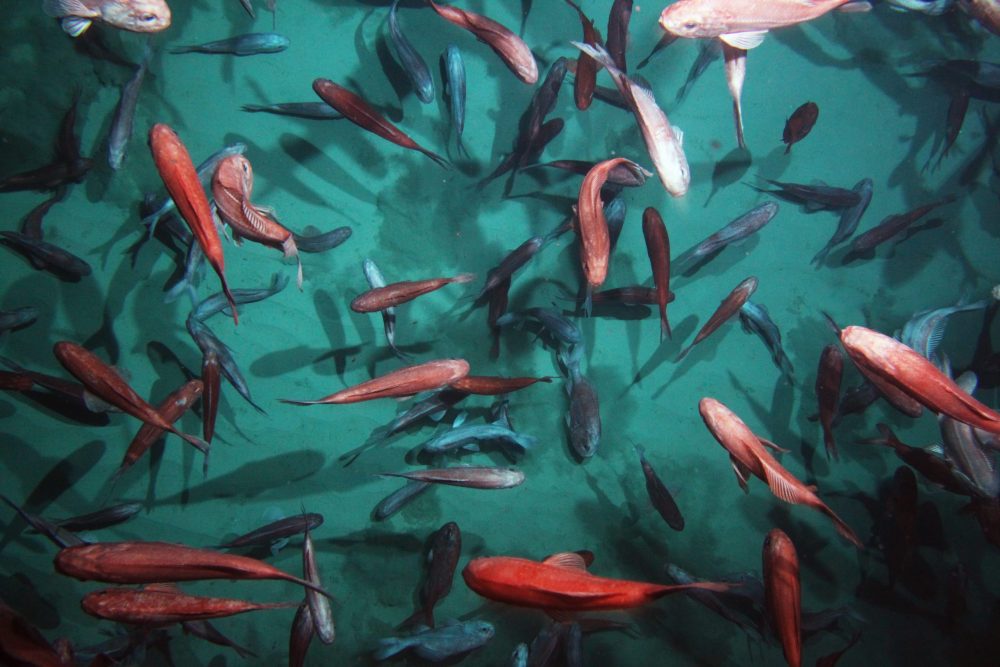28 July 2023

Orange roughy – out of sight but top of mind
The Government’s consultation on catch limits for New Zealand’s largest orange roughy fishery (the East and South Chatham Rise fishery which is a sub-area of the ORH3B stock) has brought this deepsea fish into the spotlight again.
Seafood New Zealand has recommended a precautionary catch limit reduction, but not because the fishery is in trouble. The orange roughy fishery is far from being in trouble.
Commercial catch limits, harvest strategies, and the collection and application of science to inform sustainable fisheries management is day-to-day business for both government and industry. When these regular, robust processes hit the media, readers are prompted to take notice and do their own thinking.
Towards an informed understanding of this valuable fishery, here are the facts of this sustainability review.
Government and industry agree to a catch limit reduction
In its submission to Fisheries New Zealand (FNZ), the Seafood New Zealand Deepwater Council proposed a reduction in the commercial catch limit in the fishery. In implementing what is a practical approach, the New Zealand Deepwater Council agrees with FNZ – that the catch limit requires a precautionary reduction until the stock assessment has been completed.
The ins and outs of stock assessments
Stock assessments are rigorous statistical assessments of changes in the biomass of fishstocks over time. They enable us to better understand the current status of the fish stock by looking at historical responses to different levels of catch, and to estimate the future biomass at the current management settings (e.g., catch limits or yields).
An important dataset is needed before the stock assessment can be completed. This is the ‘ageing data’ which is essentially data that provides information on the age of a fish which is gathered by counting the number of annual rings in samples of fish ear bones (otoliths). It is used to provide information on the age structure of the surveyed population as well as indicating how fast orange roughy are growing.
There’s more to the story than the headline
Our orange roughy story is well-known. Most New Zealanders who were reading newspapers in the 1980s will remember that overfishing in the late 1970s endangered the stocks (the rebranding of the fish from ‘slimeheads’ to ‘orange roughy’ helping spur new consumer demand).
The science – understanding how orange roughy grow, live and reproduce – led to a revision of the way orange roughy were managed, and in the mid-1990s new assessments demonstrated that our fisheries were recovering.
Our fondness for this story, and for this fish, might explain exaggerated news media headlines. It’s an easier heartstring to pull perhaps. But roughy stocks are not ‘plummeting’. The fish are not being harvested towards a ‘slow death’.
An abundance of caution to maintain an abundance of stock
New Zealand has an agile and responsive harvest strategy for orange roughy, where no more than 4.5% of the available biomass is harvested. In other words, from every hundred fish, we catch no more than 4.5 individuals.
The harvest strategy is a simple equation to ensure the number of fish harvested is equal to (or less than) the rate of fish joining the fishery as they transition from eggs and larvae into juvenile fish. The entry of new young fish (or recruits) into a fishery is called recruitment.
In its submission to FNZ, Seafood NZ has proposed a reduction in the catch limit for the fishery from 5,970 tonnes to 3,700 tonnes. This aligns with the harvest strategy and works out to approximately 2.5 million fish being harvested from this one fishery that has as many as 55 million fish.
Orange roughy stocks are healthy
Government and industry have reliable information showing that the stock is healthy, including:
- estimates of abundance of the fish using proven acoustic surveying methods undertaken by independent scientists.
- the number of orange roughy harvested each year, and accumulatively across years.
Looking at the East and South Chatham Rise fishery, the biomass of orange roughy in this area has been estimated at 80,000 tonnes of fish (or around 55 million individuals).
The 80,000-tonne estimate comprises 49,000 tonnes observed through acoustic surveying and 30,000 estimated by scientists for unobserved spawning fish and mature fish that are not spawning.
To summarise: There are as many as 55 million fish in the East and South Chatham Rise area, which is one of eight orange roughy fishery zones. This is not evidence of a plummeting. These fish are abundant.
Certainty is a matter of time (and science)
But we still need more science so that we can set harvest levels with more certainty. One essential piece of science – an improved ageing dataset – is needed so that the stock assessment can be completed, providing indications of sustainable yields for the harvest of this valuable fish.
Until this point, there is agreement between the government and industry to reduce the TACC in the fishery, so that we can keep fishing sustainably, maintaining New Zealanders' livelihoods and local economies (although a small reduction may still affect both). Industry and government have yet to reach a consensus on the extent of the reduction in catches.

